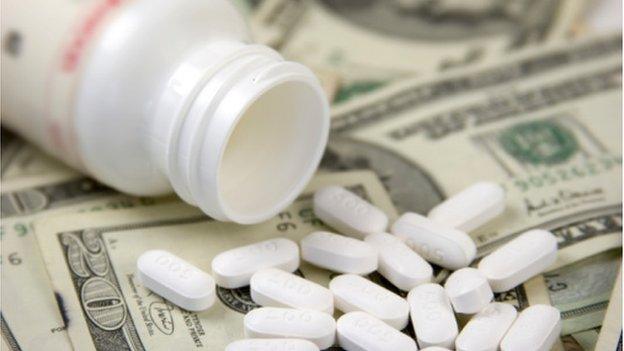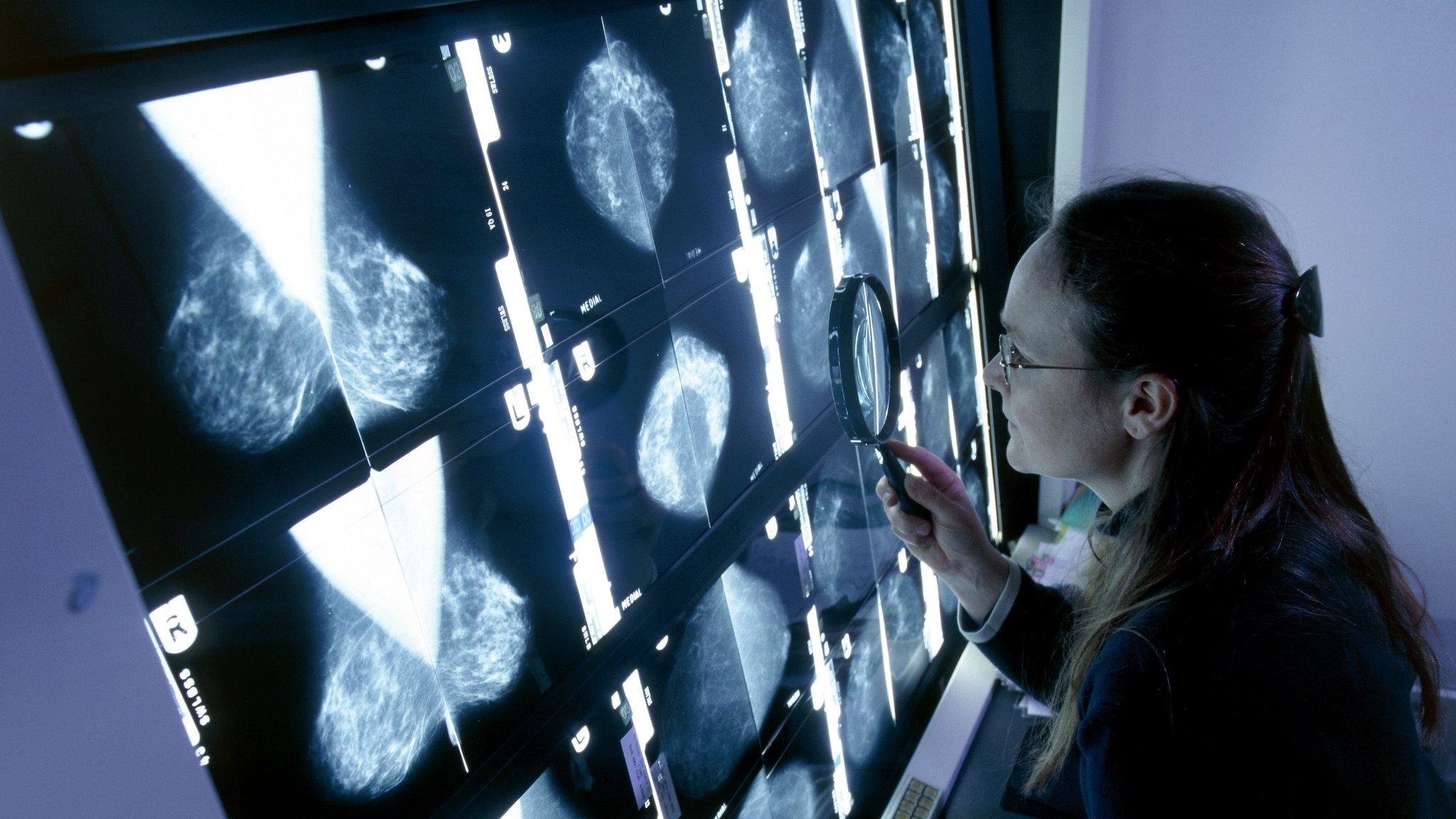Anatomy of the cost of a new drug
- Published

The cost of drugs is in the headlines following the decision by NHS watchdog NICE that a new cancer treatment should not be funded.
Its cost? More than £90,000 per patient for an extra six months of life. But how are such figures reached?
The drug - Kadcyla - was developed by Roche.
And for commercial reasons it has so far not revealed the methods behind its pricing strategy.
Lab testing and trials
But to really understand the cost of developing a new drug you have to go back to the very earliest stages of the process.

There are a number of important milestones in the journey - and at each point development can come to a halt if the treatment is found not to be viable.
Drug development essentially begins in the lab with research on animals, such as mice.
Only one in 10 potential treatments in the lab actually reach the clinical trial stage on humans.
And from there only a fifth will make it through all three phases. The most common reasons for discontinuation are the effect of the treatment being too weak, the side-effects too great or the market for the treatment too small.
Overall costs
Then comes the regulatory and marketing stage. It is a process that takes at least a decade for most drugs - and is therefore a costly process.
The Association of British Pharmaceutical Industry estimates it costs £1.15bn on average to get a drug to market.
That is in line with what most academics have estimated, including the Office of Health Economics.
But its report, The Research and Development Cost of a New Medicine, external, published in 2012, warned that working out average costs should be treated with caution as they could vary greatly depending on where the treatment was targeted.
The study said costs in cancer and neurology tended to be the highest because of the lower success rates and longer development times.
Nonetheless, the report said, only about 10% of the overall cost was actually accounted for by the lab tests and clinical trials - the so-called research and development end.
A more important factor is the cost of capital - that is related to the fact that the money has to be found upfront many years before the pharmaceutical firm sees anything back.
Other factors
And when it comes to pricing, companies also have to take into account the anticipated market for the drugs. The smaller the market, the more they have to charge.

Covering the costs of treatments that have not made it this far is also important, as the APBI admits.
A spokeswoman said: "For every one successful medicine, there are thousands of unsuccessful medicines and this has to be taken into account when making pricing decisions."
Drug firms have also been complaining about the cost of the regulatory hoops they have to jump through to get their treatments licensed. In the US that is the responsibility of the Food and Drug Administration and in Europe it's the European Medicines Agency.
Horse-trading
Once that has been achieved, the drug has to be marketed and - in terms of the NHS - get through the appraisal process.
In England, this is done by the National Institute for Health and Care Excellence.
The group uses a method called quality-adjusted life years (QALY) for assessing the value of new drug treatments. A similar system is used by the Scottish Medicines Consortium, while officials in Wales and Nothern Ireland tend to rely heavily on NICE analyses.
The formula looks at the cost of using a drug for a year and weighs it against how much someone's life can be extended and improved.
Generally if a treatment costs more than £20,000 to £30,000 per QALY, it would not be recommended as cost-effective by NICE.
Although for end-of-life treatments NICE will go to twice that amount.
As there has been with Kadcyla, there can be a period of negotiation on price.
While that appears not to have been successful this time, it has worked in the past.
Two years ago NICE initially rejected prostate cancer drug abiraterone for not being cost-effective. Approval was eventually given when the manufacturer offered a lower undisclosed price.
So after this complicated and complex process, the final price is determined by some good, old-fashioned horse-trading.
- Published23 April 2014

- Published25 March 2014
